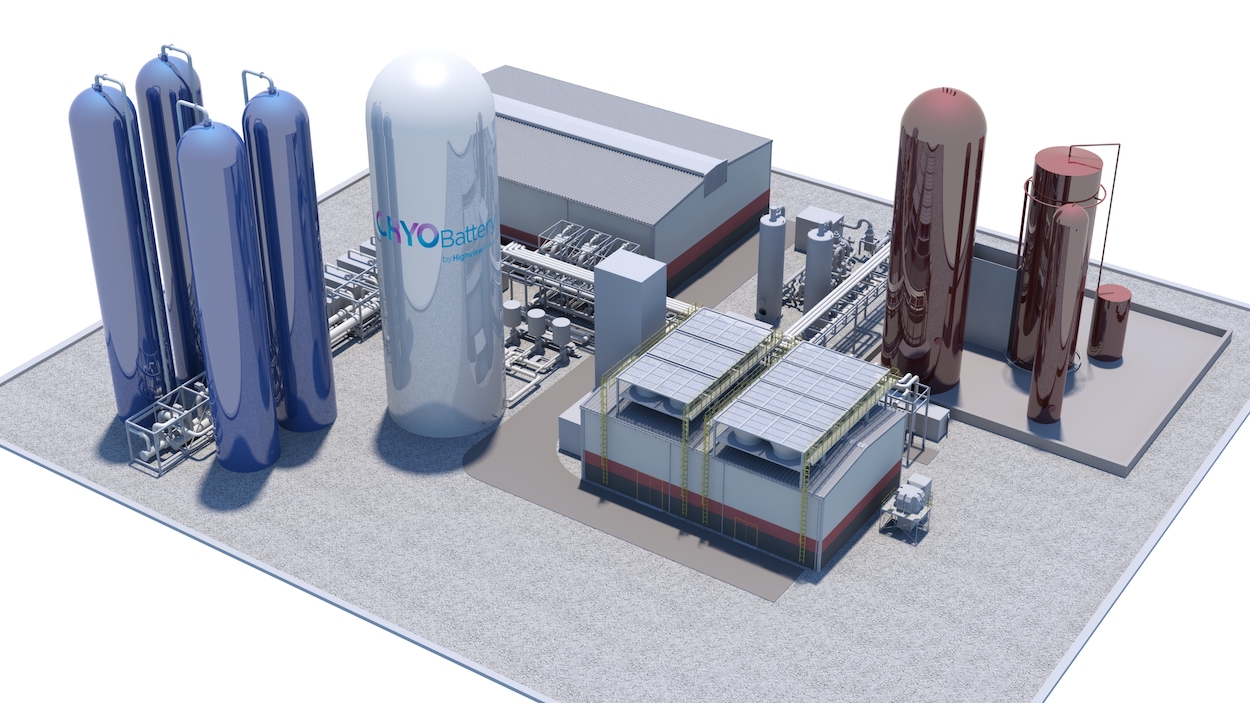
Construction is underway at the site in Greater Manchester for Highview’s 50MW LAES project. Image: Highview Power.
MAN Energy Solutions is set to provide the turbomachinery for Highview Power’s 50MW/250MW liquid air energy storage (LAES) project in Greater Manchester.
On Wednesday, the Volkswagen-owned engineering group formally signed the deal to provide the machinery for the Carrington Village site at Highview’s London office, having been selected as a potential provider for the project in April.
Construction began on the 50MW project in November 2020, which will use the LAES technology developed by Highview. This works by cooling ambient air and storing it as a liquid at low pressure, which can then be heated and expanded to drive turbines and generate electricity.
The long-duration energy storage technology, which has been dubbed the CRYOBattery, is safe and has a low cost of ownership over its lifetime, Highview Power claims, with a megawatt-scale demonstrator project already in operation near to the much larger system’s site.
The Mayor of Greater Manchester, Andy Burnham, hailed the project as a “world-first” which will demonstrate how Greater Manchester is “putting itself at the forefront of the next industrial revolution in sustainable low-carbon technologies”.
“We know that there are good green jobs in new industries just waiting to be created right across Greater Manchester and the North West, and we hope that the Carrington storage facility will help us pioneer those skills and give a boost to our ambition of becoming carbon neutral by 2038,” Burnham said.
The project is scheduled to reach commercial operation during next year and it will be operated by Highview Power in partnership with independent power plant developer Carlton Power.
In an interesting industry parallel development, Malta Inc, a US-based developer of a novel ‘pumped heat energy storage’ (PHES) technology signed a partnership a few days ago with Siemens Energy for the turbomachinery that its large-scale, long-duration storage projects will require.
This article originally appeared on Solar Power Portal’s sister site, Energy Storage News

